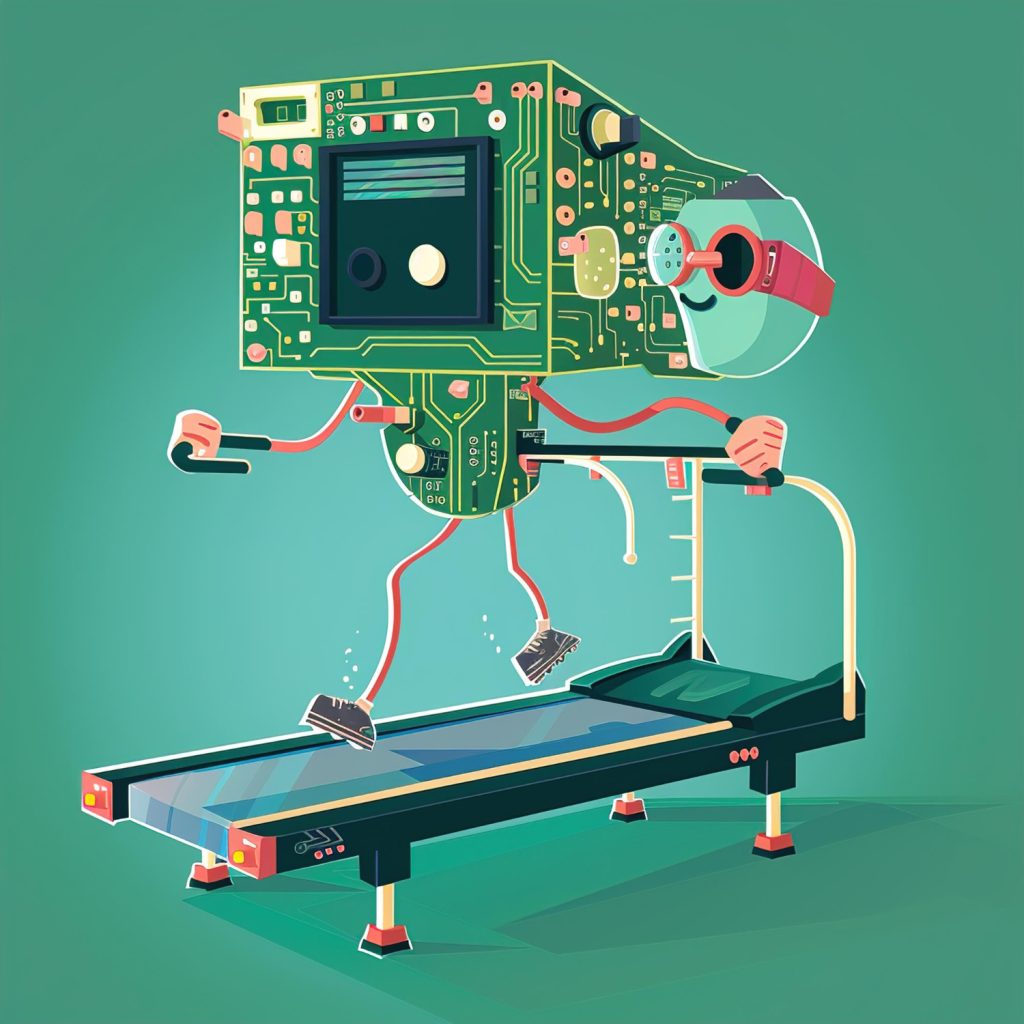
From Prototype to Production: The Life Cycle of a PCB
Here’s a prompt for visualizing the life cycle of a PCB:
“Illustrate the complete life cycle of a PCB, starting from the design phase to production and deployment. Break the process into key stages: schematic design, PCB layout, prototyping, testing, mass production, and integration into the final product. Show detailed visuals of each stage, such as engineers working on design software, prototype testing with lab equipment, and an automated assembly line for production. Highlight challenges and optimizations at each step, like design validation, material selection, and quality control. Use a flowchart or timeline-style layout to guide viewers through the PCB’s journey from concept to real-world application.”
1. PCB Design: The Blueprint for the Board
The first step in the PCB life cycle begins with designing the circuit board. During this phase, the engineers and designers work together to define the functional requirements of the product. This includes selecting the appropriate components, deciding on the board’s dimensions, and mapping out the electrical paths that connect the components.
Design Tools: PCB design is typically done using specialized software tools such as Altium Designer, Eagle, or KiCAD. These programs allow engineers to create detailed schematic diagrams, which will later be translated into a physical layout for the PCB.
During this phase, engineers consider factors such as signal integrity, electromagnetic interference, and component placement. It is critical to ensure that the design is optimized for performance, durability, and manufacturability.
Sources:
- According to PCBWay, software like Altium or Cadence helps streamline the design process by allowing real-time collaboration between designers and engineers.
- Electronic Design emphasizes the importance of component placement for maintaining signal integrity in high-speed circuits.
2. Prototyping: Testing the Design
Once the PCB design is complete, the next step is prototyping. The prototype is essentially a sample or small batch of PCBs that are manufactured based on the initial design. The prototype allows engineers to test the PCB’s functionality and ensure that it meets the required specifications.
During the prototyping phase, the focus is on identifying potential issues that might not have been apparent during the design phase. These might include short circuits, poor soldering points, or unforeseen signal interference.
In addition, this stage allows the team to test the component placement and thermal performance. If any issues are discovered, the design is revised, and a new prototype is produced. This iterative process helps refine the PCB before it moves on to mass production.
Sources:
- PCB Universe discusses the importance of rapid prototyping in PCB manufacturing, emphasizing how it helps identify design flaws early in the process.
3. Manufacturing the PCB: Turning the Design into Reality
Once the prototype is validated, the design moves to the manufacturing stage. PCB manufacturers use specialized equipment and technologies to fabricate the actual board.
Key steps in the manufacturing process include:
- Layering: PCBs are usually made in layers. The number of layers depends on the complexity of the circuit. In multi-layer boards, conductive copper layers are alternated with insulating layers to form the necessary connections.
- Etching: The copper layers are etched to create the circuit patterns, which are critical to the PCB’s function.
- Drilling: Holes are drilled into the PCB for vias, which are tiny copper connections that help link different layers of the board.
- Plating and Solder Masking: The board is plated to create copper connections and then coated with a solder mask, which prevents unintended short circuits during assembly.
Manufacturers typically use automated pick-and-place machines to assemble the components onto the PCB. These machines precisely position the components on the board based on the design specifications, after which the board is soldered to create the necessary electrical connections.
Sources:
- JLCPCB explains that the solder mask and silkscreen layer are crucial for protecting the board and improving readability for manufacturers and technicians during assembly.
- Advanced PCB Design highlights the need for precision in component placement during the manufacturing process to avoid costly errors.
4. Assembly: Finalizing the PCB for Use
After the PCB is manufactured, the next step is the assembly of the final product. This is where the PCB is populated with its electronic components—resistors, capacitors, integrated circuits (ICs), and more.
The assembly process includes:
- Surface Mount Technology (SMT): This is the most common method, where components are mounted directly onto the surface of the PCB. SMT allows for high-speed assembly and is well-suited for mass production.
- Through-Hole Technology: This older method involves inserting components through holes in the PCB and soldering them from the other side. While less common today, it’s still used for components that require more mechanical strength.
Once the components are placed, the PCB is tested for electrical functionality and performance. Automated Optical Inspection (AOI) systems are used to check for defects in component placement, soldering, and other potential issues.
Sources:
- PCBWay explains the difference between SMT and through-hole assembly, emphasizing the speed and precision of SMT in high-volume production.
5. Testing: Ensuring Quality and Performance
Testing is an essential part of the PCB life cycle, ensuring that the board works as intended before it’s shipped out. There are several types of tests used in the PCB industry:
- Electrical Testing: This includes tests like In-Circuit Testing (ICT) or Flying Probe Testing to check the electrical functionality of the board.
- Functional Testing: This type of testing verifies the board’s functionality in a real-world scenario, ensuring that it meets the necessary operational standards.
- Thermal Testing: Some PCBs, especially those used in high-performance applications, undergo thermal cycling tests to ensure they can withstand extreme temperatures.
Sources:
- Electronics Weekly outlines the different testing methods used to verify PCB quality and performance.
6. Mass Production: Scaling Up
Once the PCB design has passed the prototyping and testing stages, it moves to mass production. In this phase, the PCB is produced in large quantities to meet market demand. The goal is to scale up the process while maintaining the same level of quality control and precision established during the prototype phase.
At this stage, manufacturers may also consider factors like supply chain logistics, ensuring that the right materials are sourced in bulk and delivered on time. As production ramps up, manufacturers will optimize their processes to balance cost efficiency with product quality.
Sources:
- According to PCBWay, effective supply chain management and production optimization are critical in mass-producing high-quality PCBs on time.
Conclusion
The journey of a PCB from prototype to production involves a collaborative effort between designers, engineers, and manufacturers. Each phase of the process is critical for ensuring that the final product is functional, reliable, and cost-efficient. From initial design, prototyping, and manufacturing to assembly, testing, and mass production, the PCB life cycle is a complex yet fascinating process that drives the innovation behind the electronics we rely on every day. By understanding this journey, stakeholders can better appreciate the intricacies involved in creating the tiny but powerful boards that power modern technology.
Hey
I'm Emma!

Lorem ipsum dolor sit amet, consectetur adipiscing elit. Ut elit tellus, luctus nec ullamcorper mattis, pulvinar dapibus leo.
